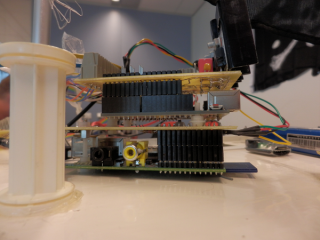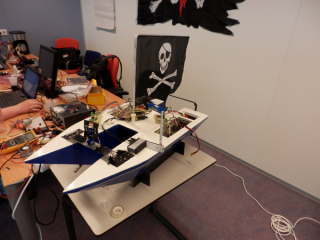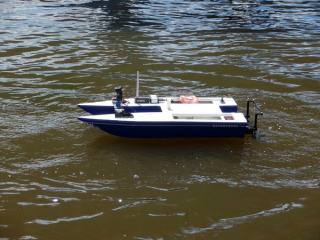In the last 8 weeks or so I was working together with 3 other students researching some of the possibilities of the Raspberry Pi and what it could offer the school for future education and research purposes. The results of the many small research subjects came together in a remote controlled boat.
Sadly due to me getting sick this week I haven’t been able to properly finish the project myself, but the other team members were able to though.
The boat’s (server) software is a Python app running on the Raspberry Pi (model A). This app is responsible for communicating with the Arduino through I²C and basically tells the Arduino which channels to modify. The Arduino runs a simple C program for this. There are 2 separate motor controllers which are connected to the Arduino. The rudder is a single servo which is also connected to the Arduino. Initially we had planned on mounting a camera on the pan-tilt mechanism which is located up front, but the ideas we had for implementing computer vision didn’t quite work out. The pan-tilt mechanism has two servo’s, both connected to the Arduino. So in short the Arduino drives all the hardware and the Raspberry Pi tells the Arduino what to do.
The Arduino itself is ‘mounted’ to the Raspberry Pi with the use of a custom made connector board. The Arduino is placed on top of that. On top of the Arduino is a custom made shield which has pins for connecting the motor controllers and servo’s and powers both the Arduino and Raspberry Pi.
We decided to call it the Stackberry Pi.
Here’s our workroom where the boat was being worked on.
And finally its first test run!
But motionless pictures are no fun. Here’s a video of the boat’s first test run.
In case you’d like to hear more details about the boat please do ask.


